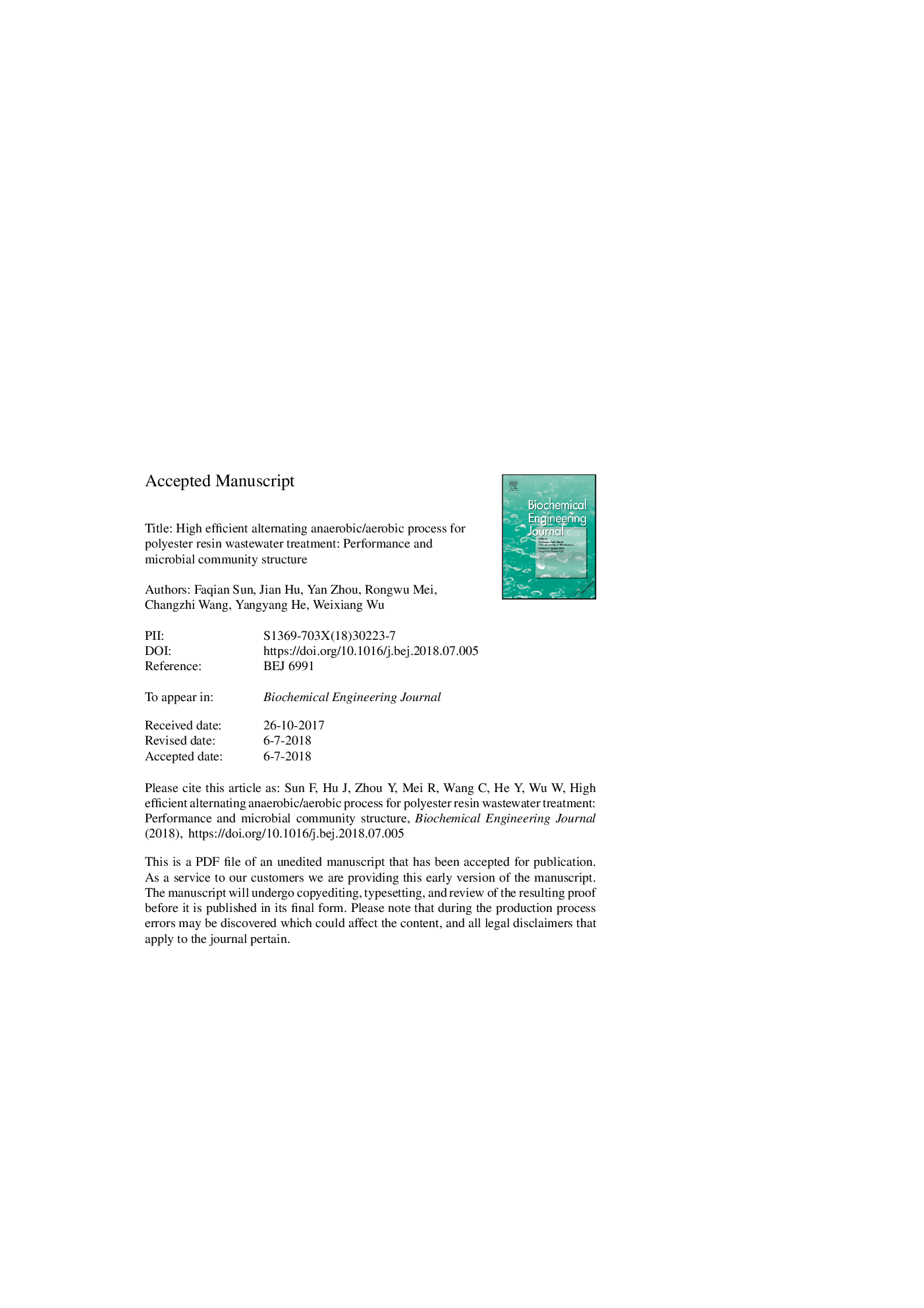| Article ID | Journal | Published Year | Pages | File Type |
|---|---|---|---|---|
| 6483873 | Biochemical Engineering Journal | 2018 | 35 Pages |
Abstract
This study investigated organics removal and microbial community in a two-stage alternating anaerobic/aerobic (A1/O1/A2/O2) process for polyester resin wastewater treatment. It was found that chemical oxygen demand (COD) concentration could be reduced to below 500âmgâLâ1 from 12,880âmgâLâ1 with average COD removal rate of 2.79, 4.37, 0.50 and 0.97âkgâmâ3âdâ1 in four reactors, respectively. Two important chemical compounds in the wastewater, namely, purified terephthalic acid (PTA) (625âmgâLâ1) and phenol (480âmgâLâ1), did not display inhibitory effects on COD removal while they were almost completely degraded in the first-stage A/O process. Further, the majority of esters, alkanes, phenols, acids and alcohols could be removed in the system. However, two hazardous refractory compounds, 5,5-dimethyl-1,3-dioxane and 1,4-dioxane, were still present as major components in the final effluent. 16S rRNA high-throughput sequencing results revealed that a distinct preference of selected bacterial groups towards anaerobic/aerobic reactors and operating conditions. High abundance of Lewinella genus (2.4-34.0%), which was correlated to ester-hydrolyzing ability, may play an important role in the high efficiency of organics removal.
Related Topics
Physical Sciences and Engineering
Chemical Engineering
Bioengineering
Authors
Faqian Sun, Jian Hu, Yan Zhou, Rongwu Mei, Changzhi Wang, Yangyang He, Weixiang Wu,
